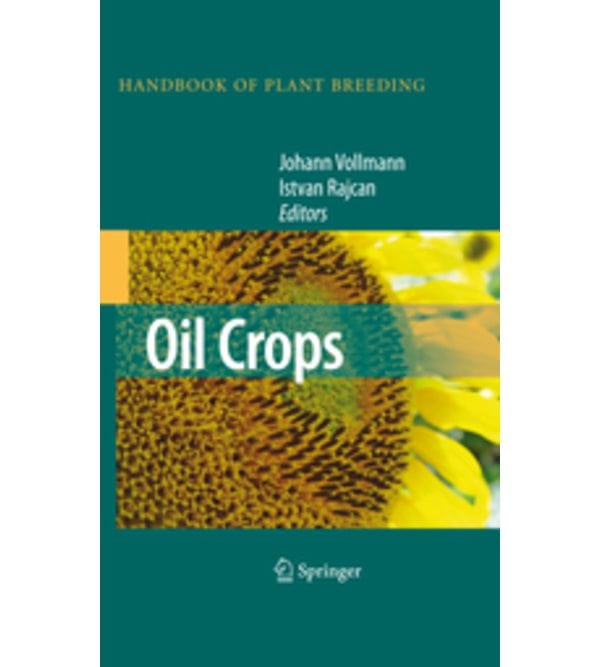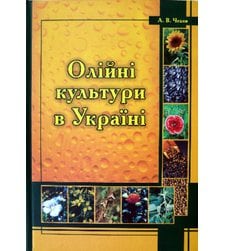
Login or create an account
CloseReturning Customer
I am a returning customer
Login or create an account
CloseRegister Account
If you already have an account with us, please login at the login form.
Ваш обліковий запис створено!
Дякуємо за реєстрацію на ПрофКнига!
Ви будете повідомлені по електронній пошті, як тільки Ваш Особистий Кабінет буде активований адміністрацією магазину.
Якщо у Вас є якісь запитання, будь ласка пишіть нам.
Вихід
Ви вийшли з Особистого Кабінету.
Ваш кошик було збережено. Його буде відновлено при наступному вході у Ваш Особистий Кабінет.
Oil Crops
- 7488 грн
- Автор: Johann VollmannIstvan Rajcan
- Видавництво: Springer
- Рік видання: 2010
- Сторінок: 548
- Склад: На замовлення
Vegetable oils have gained in importance during the past few decades resulting in the doubling of the world oil crop production in the last 25 years. Oil crops have been increasingly used as raw materials for food, livestock feed and non-food industrial applications. Plant breeding has played an essential role in supporting these developments: Breeding for higher yield and oil content allowed for an increase in oil production per unit area, whereas breeding for better oil quality has improved both the human health value of vegetable oils as well as the suitability of particular oils in specific industrial applications. Moreover, newly developed unique oil qualities are opening new opportunities in agricultural production and processing. Oil crop species have been developed in various botanical families from both the monocots and dicots. Thus, oil crops are a highly diverse set of species from short season annuals to perennials with a life span of over 2000 years. Consequently, breeding methods used for oil crop improvement include clonal breeding, pure line breeding, improvement of open-pollinated populations as well as hybrid breeding. In particular, the breeding procedures and techniques include almost every activity from simple mass selection and hybridization to specialized biotechnologies such as in vitro propagation or genetic engineering.
Oil Crops Breeding is a state-of-the-art compilation and a major reference text on oil crop breeding, which has been lacking for several decades. While the information accumulated in this volume is of primary interest to plant breeders, valuable insights are also offered to agronomists, molecular biologists, physiologists, plant pathologists, food scientists and university scholars from the comparative treatment of various oil crop species. Oil Crops Breeding presents 17 chapters devoted to the breeding of particular oil crop species. Oil crops with world-wide distribution such as soybean, sunflower, oilseed rape and related brassicas are presented side-by-side with tropical and subtropical species such as cotton seed, peanut or castor, the perennials oil palm, coconut and olive, minor oil crops of regional importance such as safflower, poppy, oil pumpkin or maize, and new oil crops such as lesquerella and cuphea. Origin and domestication, varietal groups, genetic resources, major achievements and current breeding goals, breeding methods, techniques and biotechnologies, and seed production are addressed depending on their relevance in a particular crop.
Each crop chapter has been written by outstanding experts in their respective fields. Whenever possible authors from different institutions or countries worked together on particular chapters, which contributed to broadened and well-balanced views on particular species or topics. Рослинні масла набули важливості протягом останніх десятиріч в результаті подвоєння виробництва олійних культур у світі за останні 25 років. Вдосконалення технологій вирощування цих культур відіграє ключову роль у підтримці цього розвитку. Збільшення врожайності і якості сировини дозволяє досягати підвищення показників виробництва. Покращення якості олії позитивно впливає на здоров'я людей, сприяє використанню рослинних масел у інших сферах життєдіяльності. Різноманітні олійні культури мають як дво- так і однодольне походження, а отже існує великий вибір видів від короткострокових однорічних до багаторічних рослин. Методи вдосконалення вирощування олійних культур включають генетику, селекцію, розведення гібридних сортів. Таким чином технологія вміщує майже весь спектр агрономічних заходів від простої вагової селекції і гібридизації до спеціальних біотехнологічних методів, як генна інженерія або вирощування у пробірці. Інформація, викладена у цьому довіднику, в першу чергу призначена для сільгоспвиробників, але цінні знання від порівняння різних культур можуть отримати також спеціалісти з молекулярної біології, фізіології, фітопатології, харчових технологій. Представлені як олійні культури, поширені у всьому світі, такі як соя, соняшник, рапс, так і тропічні: кокосова пальма, оливкове масло, арахіс, насіння льону тощо. Розглянуто також рідкі олійні культури регіонального значення: сафлор , мак , масло гарбуза або кукурудзи , а також нові нафтові культури , такі як Lesquerella і куфея. Походження і культивація, сортові групи, генетичні ресурси , основні досягнення та поточні цілі розведення, методи розведення, методи і біотехнології, а також виробництво насіння розглядаються в залежності від їх значимості в тій чи іншій культурі .
- ISBN: 978-0-387-77593-7
- Мова видання: EN
- Вага: 1,000г


